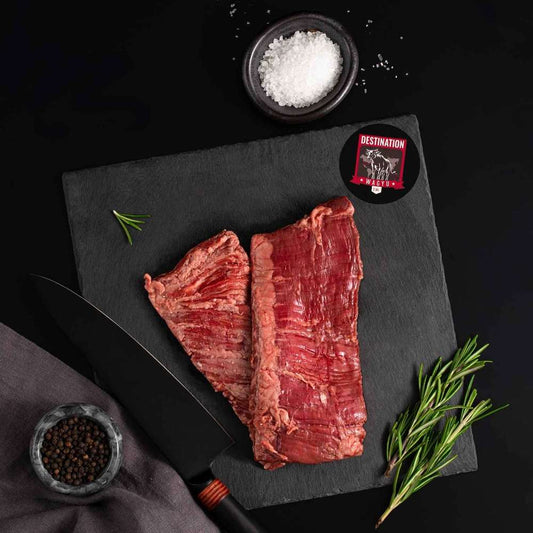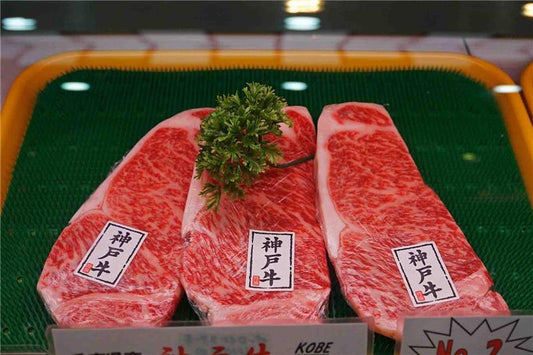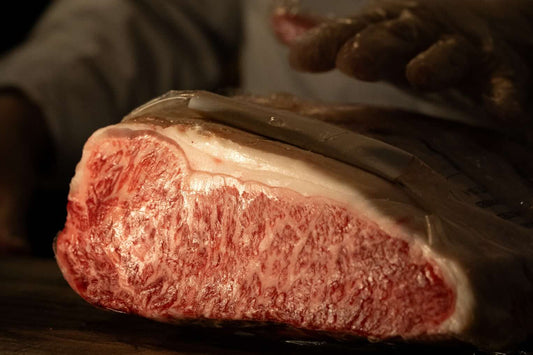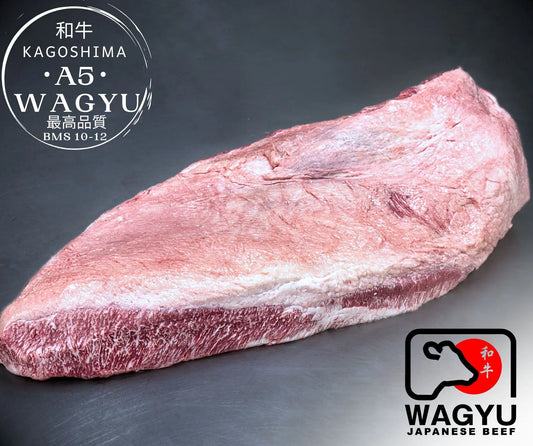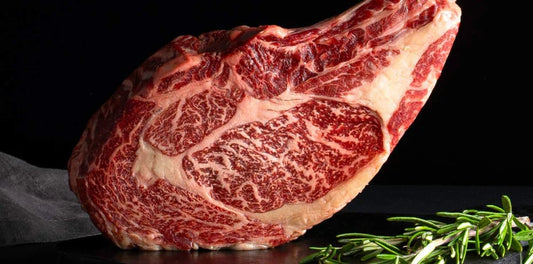When I speak to fellow professionals in the meat industry, whether producers, chefs, processors, graders, or import/export stakeholders, Wagyu inevitably comes up not just as a product, but as a phenomenon. It's not merely beef; it's a cultural artifact, a symbol of precision, patience, and pedigree. While its popularity among consumers has grown substantially, the depth of knowledge required to properly understand, evaluate, and produce Wagyu remains highly specialized. This guide is not for the casual reader. It is written for those of us who live and breathe the complexities of premium meat, and who seek a clear, structured understanding of Wagyu from a technical and commercial perspective.
We’ll explore everything from breed genetics to carcass grading, fat metabolism to export logistics. My intent is not to simplify Wagyu, but rather to engage fully with its complexity. Whether you're operating a feedlot, cutting meat in a high-end butchery, managing a culinary brand, or making breeding decisions, I believe this resource will provide comprehensive value.
Origin, History, and Breed Development
Historical Timeline of Wagyu
Understanding Wagyu’s present begins with its past. Wagyu, which literally means “Japanese cow,” refers to specific native Japanese breeds developed over centuries through isolation, environmental pressures, and, more recently, structured breeding. Originally used as draft animals in agriculture, their heavy musculature and intramuscular fat were adaptive traits. Japan's mountainous terrain required animals that were physically resilient and could sustain long hours of labor. Fat deposits between muscle fibers, what we now call marbling, served as energy reserves.
In the late 1800s, during the Meiji Restoration, Western cattle breeds were introduced and crossbred with native Japanese cattle in an effort to modernize agriculture. However, by the early 1900s, the government reversed this practice, recognizing the value of Japan’s native lines and their superior meat quality. Selective breeding programs isolated four primary breeds, each with unique phenotypes and economic roles. These decisions laid the foundation for the Wagyu strains we know today.
Regional Lineages and Prefecture Significance
Japan’s obsession with regional expression extends beyond sake and tea, it is deeply ingrained in its beef culture. Kobe beef, arguably the most famous Wagyu brand, is derived from the Tajima strain of the Japanese Black breed raised exclusively in Hyogo Prefecture. But Kobe is only one of several prestigious regional brands. Matsusaka beef from Mie Prefecture, Omi beef from Shiga, and Hida beef from Gifu each offer nuanced variations in flavor, texture, and fat quality based on breeding lines, terroir, and production protocols.
Each prefecture often operates with its own cooperative breeding programs, feed formulation standards, and marketing bodies. This regional control contributes to Wagyu’s mystique and perceived value, but it also creates inconsistency across markets when professionals attempt to standardize quality metrics internationally.
International Genetic Exportation and Control
From a genetic resource management standpoint, the global Wagyu landscape is still recovering from the consequences of limited genetic exports that occurred in the 1990s. A small number of fullblood animals were exported to the United States and Australia before Japan halted all exports in the early 2000s. Today, Australia holds the largest fullblood Wagyu herd outside Japan, while the United States has developed a thriving market largely composed of F1 and F2 crossbreeds (Wagyu x Angus).
Breed associations in Japan and abroad have implemented rigorous standards to prevent fraudulent labeling. Traceability systems like nose print authentication, DNA registration, and proprietary branding all serve to protect the integrity of Japanese Wagyu lines. The international community must continue to grapple with ethical questions related to genetic ownership and the commercialization of what was once a national biological treasure.
Breed Classification and Genetic Science
The Four Japanese Wagyu Breeds
Japan officially recognizes four native Wagyu breeds: Japanese Black (Kuroge Washu), Japanese Brown (Akage Washu), Japanese Shorthorn (Tankaku Washu), and Japanese Polled. Among these, Japanese Black dominates both the domestic and international premium beef market due to its extraordinary genetic potential for marbling.
The Japanese Brown, often associated with Kumamoto Prefecture, produces leaner beef with a lighter fat profile, making it popular in markets that value balance over opulence. The Shorthorn, with roots in northern Japan, offers high yields and an intense umami profile but lacks the extensive marbling of its cousins. Japanese Polled cattle, extremely rare, contribute unique textural properties but are seldom seen outside specialty programs.
Genetic Markers and Biochemical Pathways
From a molecular biology perspective, marbling in Wagyu is driven by both monogenic and polygenic traits. Studies have identified specific single nucleotide polymorphisms (SNPs) associated with marbling, most notably in the SCD (Stearoyl-CoA Desaturase) and FABP4 (Fatty Acid Binding Protein 4) genes. These genes influence fatty acid synthesis and deposition, affecting both the quantity and quality of intramuscular fat.
Wagyu exhibits unusually high activity of adipogenic pathways, with gene expression favoring intramuscular adipocyte differentiation over subcutaneous or intermuscular deposition. The result is a phenotype defined not only by visible marbling but by the biochemical nature of that fat softer, lower melting point, and rich in monounsaturated fats like oleic acid.
Linebreeding, EBVs, and Genomic Tools
The use of Estimated Breeding Values (EBVs) has become increasingly standard in Australian and U.S. Wagyu herds, allowing for data-driven decisions on traits such as IMF percentage, eye muscle area, and docility. Genomic selection tools have further refined the breeding process, helping producers identify elite sires and dams even before phenotypic traits are fully expressed.
However, linebreeding remains a double-edged sword. While it can fix desired traits quickly, it also increases inbreeding coefficients and the risk of genetic bottlenecks. Responsible management of bloodlines, including cross-checking pedigrees and integrating outcrosses, is essential for long-term genetic viability.
Production and Rearing Systems
Lifecycle Phases and Timelines
A typical Wagyu production cycle is far longer than conventional beef operations. Calves are born on cow-calf operations and raised to weaning around 8–10 months. After that, they are transferred to backgrounding programs where they are gradually introduced to high-energy rations. The finishing phase begins at roughly 15 months and may extend until the animal reaches 30 to 36 months, depending on the desired marbling score.
This protracted lifecycle demands extensive capital, labor, and biosecurity planning. Longer rearing periods not only increase feed costs but also elevate risk disease, injury, and market fluctuations all become magnified in a long-term system.
Housing, Welfare, and Environmental Control
Japan’s Wagyu producers often use small-scale operations with pens housing one to three animals. The emphasis is on low-stress environments: quiet handling, temperature control, rubber mat flooring, and even periodic grooming. While this level of care may sound excessive to conventional producers, it aligns directly with performance outcomes. Stress negatively impacts rumen efficiency, immune function, and ultimately marbling.
International operations, particularly in Australia and the U.S., have adapted larger-scale feedlot models while attempting to preserve these animal welfare standards. Shade structures, misting systems, and low-density pens are increasingly common in high-end Wagyu operations abroad.
Global Production Models
Australia has successfully positioned itself as the leader in fullblood Wagyu production outside Japan. The country’s traceability systems, open genetic registry, and favorable climate have made it an ideal environment for both seedstock and commercial production. The U.S., by contrast, has leaned heavily into crossbreeding, with F1 (50% Wagyu x 50% Angus) dominating restaurant menus. While these crosses produce excellent eating quality, they lack the extreme marbling of fullbloods.
Emerging markets, including the UK, Chile, and the UAE, are beginning to experiment with localized Wagyu programs. Their success will depend largely on how well they can replicate the feed, genetics, and animal handling protocols that define true Wagyu quality.
Feeding Protocols and Nutritional Strategy
Staged Feeding Systems
In the Wagyu production model, nutrition isn’t a static equation; it evolves over the life of the animal. Feeding is typically divided into three stages: pre-conditioning, grower, and finishing phases, with each stage designed to support not just weight gain but metabolic preparation for marbling. In the early months, calves are introduced to milk replacers and starter pellets before gradually moving to a grower ration rich in fiber and moderate in energy. The goal here is to foster skeletal and muscular development without premature fat deposition.
Once transitioned to the finisher phase, the diet becomes highly energy-dense, often exceeding 70% Total Digestible Nutrients (TDN). These rations are predominantly grain-based, with corn, barley, rice bran, and wheat as common carbohydrates, supported by protein sources like soybean meal or cottonseed. Feeding frequency and consistency are crucial at this stage. Any disruption in feed availability can suppress marbling due to metabolic stress responses.
Composition of High-Marbling Diets
True high-performance Wagyu rations are constructed with an eye toward lipid metabolism. Ingredients are selected not only for energy content but for their fatty acid profile, fermentation rate, and impact on rumen microflora. Rice bran, for instance, is prized in Japanese diets for its palatability and contribution to fat softness. In contrast, Australian diets may rely more heavily on barley and dry-rolled wheat due to regional availability.
Supplementation is equally strategic. Vitamin A is often restricted in the final months to encourage marbling without compromising vision or immunity. Vitamin E is enhanced to reduce oxidative stress and improve meat color stability post-slaughter. Some operations add linoleic acid or direct oleic acid precursors in an effort to push IMF quality beyond standard genetic potential.
Alternative Feeding Systems
In response to consumer demand for sustainability and differentiation, some producers are exploring pasture-raised or semi-intensive Wagyu systems. These models incorporate forage-based rations with limited grain supplementation. While more environmentally friendly and potentially higher in omega-3 fatty acids, these animals typically produce lower BMS scores and less consistent carcass traits.
There are also operations investigating fermented total mixed rations (TMR) or even by-product diets using citrus pulp, molasses, or brewer’s grain. While cost-effective, these alternative approaches require meticulous ration balancing and rumen monitoring to ensure they don’t suppress marbling potential or create metabolic disorders like acidosis.
Myths vs. Reality
We’ve all heard stories of Wagyu cattle being fed beer and massaged daily to increase marbling. While rooted in some real practices, these are largely exaggerated. In a few specialty operations particularly in regions like Kobe, beer may be offered during hot summers to stimulate appetite. Massage, when used, is more about muscle relaxation in confined housing systems than a magical marbling enhancer. Music, grooming, and aromatherapy may contribute to animal calmness, but there is no direct, proven biochemical link to IMF development. The key levers remain nutrition, genetics, and stress management.
Meat Science, Carcass Analysis, and Marbling Physiology
Adipogenesis and Marbling Physiology
The remarkable marbling seen in Wagyu is not just a product of feeding; it's the outcome of differential gene expression favoring intramuscular adipogenesis. Unlike most beef breeds, which develop subcutaneous and intermuscular fat more readily, Wagyu tends to deposit lipids between muscle fibers, a process regulated by complex transcription factors like PPARγ and C/EBPα. The timing of adipocyte differentiation is also extended in Wagyu, allowing more fat cells to develop before being filled.
This biological window means producers must time nutritional support precisely. Too much energy too early can lead to over-conditioning and poor muscle-to-fat ratios. Too late, and the animal may fail to reach target marbling levels. The balance of growth-promoting hormones, including insulin, GH, and IGF-1, must be modulated through feed and management, not pharmaceutical inputs, in premium programs.
Fatty Acid Profile and Nutritional Characteristics
One of the defining features of Wagyu beef is its high concentration of monounsaturated fats (MUFA), especially oleic acid (C18:1). Research has shown that Wagyu can contain up to 50–60% MUFA in total fat content, compared to 30–40% in conventional breeds. This is largely due to enhanced SCD enzyme activity, which converts saturated fats into unsaturated forms.
From a nutritional standpoint, this fat profile is both a selling point and a health advantage. Oleic acid is associated with improved cholesterol ratios in humans, and its lower melting point (often as low as 22–26°C) contributes to the meat’s signature mouthfeel. Unlike harder fats that coat the palate, Wagyu fat melts cleanly, distributing flavor and texture across the tongue with remarkable efficiency.
Texture, Juiciness, and WHC
Beyond fat, Wagyu is prized for its tenderness, which is influenced by collagen content, muscle fiber diameter, and postmortem proteolysis. The collagen in Wagyu is finer and more soluble, breaking down easily during cooking. Muscle fibers tend to be shorter and of a higher proportion of Type I oxidative fibers, which retain water better and contribute to softness.
Water-holding capacity (WHC) is another critical factor. Wagyu maintains high WHC even at extended aging periods, allowing for longer dry-aging and improved flavor concentration without excessive purge. The interplay of marbling, fiber structure, and enzymatic degradation yields a product that is not only tender but uniquely juicy even under minimal cooking.
Grading Systems: Domestic and International Standards
Japanese Grading System (JMGA)
The Japan Meat Grading Association (JMGA) operates the most detailed beef evaluation protocol in the world. It assesses carcasses on two primary axes: Yield Grade (A, B, or C) and Meat Quality Grade (1 through 5). The quality grade further breaks down into four metrics: marbling, meat color and brightness, firmness and texture, and fat color and luster. Of these, the Beef Marbling Score (BMS) is the most iconic, ranging from 1 (virtually no marbling) to 12 (extreme marbling).
Achieving a BMS 10–12 carcass is exceedingly rare and requires optimal genetics, nutrition, and slaughter timing. Each ribeye cross-section is photographed, scored by trained evaluators, and often accompanied by MIJ digital imaging systems for enhanced consistency.
International Grading Systems
Outside Japan, grading systems differ substantially. In the U.S., Wagyu is typically graded under the USDA system, where Prime is the highest grade, roughly equivalent to a BMS 6–7. USDA lacks the granularity to differentiate ultra-high marbling levels, which has led many Wagyu brands to incorporate hybrid systems. Australia uses the AUS-MEAT and Meat Standards Australia (MSA) frameworks, which include marbling scores up to 9+, with some private programs extending the scale to 12.
Each system uses different methodologies: USDA relies on visual assessment at the 12th rib, while MSA incorporates consumer-based eating quality data. Professionals in the Wagyu trade must navigate these disparities and educate clients accordingly, particularly in export markets where expectations may not align with grading metrics.
Proprietary and Hybrid Grading Models
To overcome grading inconsistencies, several Wagyu brands and alliances have developed their own internal standards. These hybrid models combine visual marbling scores with meat chemistry (e.g., oleic acid levels), carcass weight, and even sensory evaluations. Some producers utilize MIJ-30 and MIJ-42 camera systems to digitally score marbling and integrate AI to reduce human variability.
The future of grading may lie in biometric and chemical evaluation tools rather than visual assessments alone. These technologies can improve both accuracy and transparency, providing a fuller picture of meat quality beyond simple intramuscular fat.
Butchery and Fabrication of Wagyu
Japanese vs. Western Butchery Traditions
As someone who has worked with both Japanese and Western-style butchery, I can say with certainty that Wagyu demands a fundamentally different approach. Traditional Western fabrication focuses on yield, separating primal cuts with standardized seam butchery techniques. In contrast, Japanese butchery emphasizes the aesthetic and functional quality of each muscle group. Cuts like Zabuton, Misuji, and Sankaku are isolated with surgical precision because of their ideal marbling distribution, unique texture, or preferred cooking method.
In Japanese Wagyu programs, whole carcasses are often broken down into dozens of retail-ready portions, each tailored for a specific dish. This granular segmentation maximizes not just value, but respect for the animal. It’s a mindset, each muscle has a purpose. For professionals entering this space, retraining butchery teams or partnering with fabricators familiar with Japanese techniques can add substantial value to the final product.
High-Marbled Cut Management
Handling high-marbled meat is a unique challenge. Traditional muscle structures can no longer be treated the same way once marbling surpasses a certain threshold. Wagyu cuts can tear easily under aggressive trimming or slicing due to fat saturation, especially if not chilled to the right temperature pre-cutting. Holding carcasses or subprimals just above freezing improves firmness and allows for cleaner fabrication.
Another consideration is the use of Wagyu trim and fat. In commodity beef, trim is typically relegated to grind, but with Wagyu, it can be repurposed into premium applications such as tallow butter, gourmet burgers, or fat-aging mediums. The yield from a Wagyu carcass may be lower in terms of usable lean, but when managed correctly, the margin per kilogram can be significantly higher.
Secondary Cuts and Whole-Carcass Utilization
Full utilization of Wagyu is both an economic and ethical imperative. Beyond the ribeye, striploin, and tenderloin, there’s a treasure trove of flavor-rich, marbled secondary cuts that too often go underutilized: chuck roll, tri-tip, flap, brisket point, and even shin or neck. These cuts respond beautifully to long, controlled cooking or precise slicing for raw preparations.
Increasingly, high-end operations are exploring charcuterie applications: Wagyu bresaola, pastrami, and even dry-cured sausage with Wagyu fat have become viable niche products. These value-add products not only help monetize the whole carcass but also introduce Wagyu to new culinary formats outside of traditional steak service.
Culinary Techniques and Flavor Science
Wagyu in Japanese Cuisine
Wagyu’s origins are deeply intertwined with the structure and philosophy of Japanese cuisine. Rather than focusing on volume or sear, Japanese culinary techniques prioritize balance, elegance, and mouthfeel. Thin-sliced preparations like sukiyaki or shabu-shabu allow the meat to be briefly passed through a broth or sauce, melting fat into the liquid and creating complex emulsified flavors.
Yakiniku, another staple, showcases Wagyu cooked on tabletop grills, one bite at a time, emphasizing its richness and fatty sweetness. These formats reflect a deep understanding of Wagyu's potency. Even a 50-gram portion can provide a complete sensory experience, a stark contrast to the Western steakhouse model.
Western and Fusion Applications
In Western kitchens, Wagyu is often presented as a thick steak. While this satisfies diner expectations, it poses unique challenges. High-marbled Wagyu does not benefit from aggressive charring or high-heat grilling. Instead, techniques like reverse searing, sous-vide cooking, and low-temp pan searing are preferable. These methods prevent fat loss, ensure even rendering, and protect tenderness.
Chefs are also integrating Wagyu into tartares, sushi, and small plate tastings, where a controlled portion size allows the flavor to shine without overwhelming the palate. One of the most innovative uses I’ve seen recently is Wagyu fat-infused sauces and emulsions, turning what was once trimmed into an umami-packed culinary asset.
Heat Management and Fat Behavior
Wagyu’s fat has a lower melting point than typical beef fat, often below human body temperature. This means it starts to liquefy the moment it enters your mouth. However, that also means it can render too quickly on a hot surface, leading to flare-ups, smoke, or loss of moisture. Understanding thermal thresholds is crucial. Cookware choices carbon steel, stainless, ceramic-coated, also play a role in heat distribution and fat retention.
Searing Wagyu at too high a heat often results in burned exterior and liquified interior fat. The goal is to gently coax the fat into motion, allowing it to baste the meat naturally from within. This is where culinary precision becomes non-negotiable.
Flavoromics and Sensory Science
At a molecular level, Wagyu’s flavor profile is a symphony of volatile compounds: aldehydes, ketones, lactones, and pyrazines formed during the Maillard reaction and fat rendering. The elevated oleic acid content contributes not only to mouthfeel but also to a round, slightly sweet aromatic quality that distinguishes Wagyu from all other beef types.
Sensory panels evaluating Wagyu consistently cite descriptors like “buttery,” “nutty,” “creamy,” and “long finish.” It’s this complexity, this interaction between fat, protein, and perception that has led food scientists to classify Wagyu as a high-hedonic food product. For chefs and butchers, understanding the science behind flavor helps justify the price point and manage customer expectations.
Global Trade, Certification, and Supply Chain
Export/Import Channels and Tariff Structures
The global Wagyu trade is both lucrative and logistically complex. Japan, Australia, and the U.S. are the primary exporters, with Hong Kong, Singapore, the UAE, and the U.S. as top importers of premium-grade cuts. Each region has its own tariff schedules, inspection protocols, and shelf-life regulations, making export strategy a nuanced undertaking.
Trade agreements play a pivotal role. For example, the Japan-Australia Economic Partnership Agreement (JAEPA) has significantly reduced tariffs on Australian Wagyu entering Japan, making fullblood Australian cuts competitive in Japan’s domestic market.
Authenticity and Anti-Counterfeiting Technologies
With premium pricing comes counterfeit risk. Fraudulent labeling of “Wagyu” beef, especially in markets with less stringent regulatory oversight, is a growing concern. Authentic Japanese Wagyu is typically accompanied by a nose print certificate, a carcass ID number, and a pedigree chart available through the Japan Livestock Promotion Association.
Outside Japan, tools like DNA testing, blockchain tagging, and independent Wagyu registries help ensure breed purity and traceability. As professionals, we must be proactive in verifying sourcing, especially when dealing with branded programs. Transparency is not just a legal necessity but a brand-defining trait.
Value Chain Management and Logistics
Managing Wagyu from slaughter to final sale is a cold chain logistics challenge. The meat’s high fat content makes it more sensitive to oxidation and microbial growth. Vacuum packaging, controlled aging, and transport in climate-stable containers are essential. Air freight remains the preferred method for high-end carcasses, with many programs coordinating harvest dates around shipping windows to reduce aging time during transit.
Custom-cut programs, in which subprimals are portioned and vacuum-sealed per chef or client specification, have become the standard. This reduces trim loss at the restaurant level and allows for better portion control. A successful Wagyu operation understands that logistics is part of the product story.
Wagyu Economics and Market Strategy
Production Costs and Breakeven Analysis
Wagyu is often misunderstood as simply expensive beef. But for those of us producing it, we know the price is a reflection of extraordinary input costs and production risk. A fullblood Wagyu animal can take 30 months or more to reach market weight, consuming high-quality feed for most of that time. Feed costs alone can exceed three times that of a conventional beef animal. Add land, labor, veterinary care, genetics, and facility costs, and you begin to understand the capital intensity of the enterprise.
Breakeven analysis must account for more than just feed conversion efficiency. Wagyu operations are yield-sensitive. A lower-yielding carcass with a BMS 10 may generate more net profit than a heavier carcass with average marbling. Producers need to track individual animal performance, back-test sire and dam combinations, and project market prices across grading tiers. These data-driven insights are no longer optional, they are central to profitability in Wagyu systems.
Pricing Structures and Premium Markets
Wagyu pricing is stratified across multiple layers: genetics, grade, origin, certification, and cut. Fullblood A5 Wagyu from Japan commands the highest premiums, especially when tied to a regional brand like Kobe or Matsusaka. In contrast, crossbred Wagyu (F1 or F2) may trade at a significant discount, even with high marbling, due to lower perceived exclusivity.
In the restaurant world, Wagyu pricing can be 4–10x higher than USDA Prime beef, depending on cut and origin. But wholesale or carcass pricing does not follow the same curve. Many producers are moving toward direct-to-chef and branded e-commerce models to close the margin gap. The ability to tell the storyfarm, feed, genetics, certification, directly to the buyer is a strategic advantage in today's market.
Niche Branding and Regional Differentiation
Much like terroir in wine, regional branding in Wagyu offers a way to differentiate beyond breed. Japanese brands like Kobe, Matsusaka, Omi, and Yonezawa are highly protected and audited, with strict requirements for geography, bloodlines, and production methods. These programs create vertical value chains where producers, feed companies, and processors work together under a unified label.
Outside Japan, Australian brands such as Blackmore, Mayura Station, and Stone Axe have achieved similar prestige through long-term genetic investment and feedlot discipline. For emerging producers in new geographies, establishing a credible, transparent identity is the first step toward building a niche. Authenticity, traceability, and consistency must be foundational elements.
Legal, Regulatory, and Intellectual Property Issues
Breed Trademarks and GI Protections
In Japan, Wagyu is more than a breed, it is a protected national asset. The Kobe Beef Marketing and Distribution Promotion Association has strict rules: animals must be born, raised, and slaughtered in Hyogo Prefecture and meet exacting carcass quality standards. Only a few thousand animals qualify per year. This model is a classic example of a Geographical Indication (GI) system, similar to Champagne or Parmigiano-Reggiano.
Internationally, however, “Wagyu” is not always a protected term. In the U.S., for instance, any cattle with Wagyu genetics, even F1 crossbreeds, can be sold as “American Wagyu.” This opens the door for consumer confusion and marketplace dilution. Industry professionals must advocate for clearer labeling and support breed associations that push for IP protections.
Copyright and IP Disputes in Genetics
The export of Wagyu genetics in the 1990s remains a contentious chapter. With only a handful of fullblood animals originally sent overseas, all current fullblood herds outside Japan trace back to that limited gene pool. Some Japanese stakeholders have argued that these exports occurred under questionable legal or ethical circumstances.
As genetic data becomes more commercialized, we must consider the implications of genetic IP. Should producers who develop elite marbling lines have the right to patent them? Can regional breeding programs trademark their bloodlines? The legal infrastructure around livestock genetics is still evolving, and Wagyu sits at the epicenter.
Labeling Laws and Consumer Deception
One of the most significant threats to Wagyu’s long-term value is mislabeling. Retailers and restaurants around the world often list “Wagyu” on menus and packaging without any real standard. This undermines consumer trust and devalues true Wagyu producers.
Best practices include full traceability systems, clear F1/F2/fullblood designations, and independent third-party certification. For professionals, it’s our responsibility to educate buyers and enforce standards. A global consensus on labeling and terminology, perhaps administered by an international Wagyu board, would go a long way toward protecting the industry’s integrity.
Final Thoughts: Strategic Implications and Takeaways
Wagyu is not just a premium beef, it is a complex system built on genetics, feeding science, artisanal processing, international logistics, and brand storytelling. For those of us operating within this space, excellence requires precision. Every phase, from breed selection and calf management to slaughter timing and restaurant presentation, must be orchestrated for maximum effect.
Professionally, I see Wagyu not only as a product of luxury but as a proving ground for what beef can become when every variable is optimized. The lessons learned here, about traceability, animal welfare, biochemical targeting, and culinary narrative, can shape broader shifts in the beef industry.
If we protect Wagyu’s authenticity, invest in innovation, and remain committed to rigorous standards, then its future is not just secure, it’s transformative. I hope this guide has provided you with the clarity and insight to deepen your work in this remarkable field.
About Destination Wagyu
At Destination Wagyu, everything we do is rooted in a deep respect for the extraordinary world of Wagyu beef. As you've read throughout this guide, Wagyu is far more than just meat, it's the result of genetics, patience, precision, and craftsmanship at the highest level. Our mission is to bring that legacy directly to your table, with no compromise in authenticity or quality.
We’re proud to work with the most acclaimed producers in the world, including Miyazaki, Kobe Wine, Kagoshima, and Australia’s legendary Stone Axe program. These partnerships allow us to curate an exclusive selection of fullblood and highly marbled Wagyu cuts that reflect the very best of Japanese and international breeding. Whether you're exploring the silken texture of an A5 ribeye or the bold richness of a tomahawk steak, every offering in our collection has been hand-selected to meet the highest standards.
For discerning customers, chefs, and collectors of culinary excellence, we offer more than just premium beef. Our curated gift boxes, tailored subscription programs, and concierge-level service are designed to elevate the Wagyu experience from purchase to plating. We understand that great taste is more than flavor, it’s the entire journey.
If you’ve found value in this guide and want to experience the difference for yourself, we invite you to explore our collection at our shop. Whether you're stocking your private cellar, planning a celebration, or sending an unforgettable gift, we’re here to help you make every bite exceptional.





